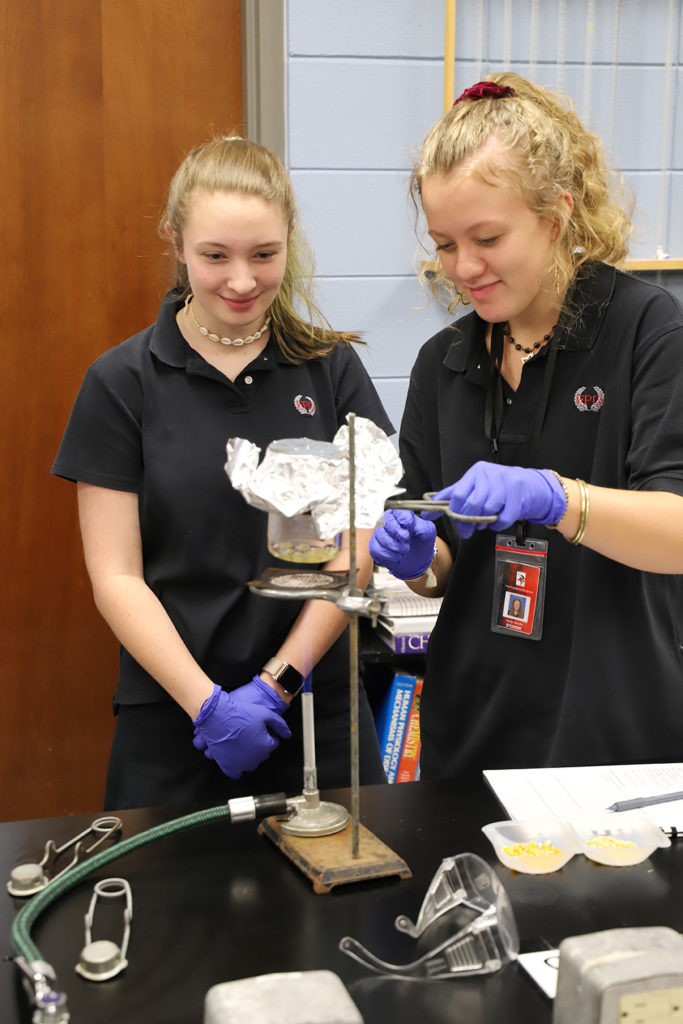 FPD teachers always find creative ways to connect what students read in their textbooks to hands-on, interactive experiences. FPD chemistry teacher Mrs. Megan Smith found a way that really “popped.”
FPD teachers always find creative ways to connect what students read in their textbooks to hands-on, interactive experiences. FPD chemistry teacher Mrs. Megan Smith found a way that really “popped.”
Mrs. Smith’s students were starting their year of studies by calculating measurements and percentages in class. As a way to add some fun and excitement to the classroom, Mrs. Smith introduced a lab that involved a favorite snack – popcorn!
Popcorn pops because of the natural moisture inside each kernel. As the internal moisture is heated, the liquid water changes to a gas, which takes up more space than the liquid. The kernel rapidly expands and “pops.” Students sought to determine if more or less internal moisture in the unpopped kernels resulted in better popped popcorn
Using beakers, electric balances, Bunsen burners, tongs, and other equipment, students measured the mass and volume of unpopped popcorn kernels. From these measurements, they calculated the percentage of water in two brands of popcorn – Great Value and Orville Redenbacher’s.
After several minutes of popping, followed by several more minutes of taste-testing, students discovered that Orville Redenbacher’s popcorn contained a higher percentage of water and that the Orville Redenbacher’s popcorn popped better. The Orville Redenbacher’s popcorn had bigger, fluffier popcorn pieces.
From these results, students were able to conclude that popcorn kernels with more water will produce larger and better popcorn – and that science can be delicious!
